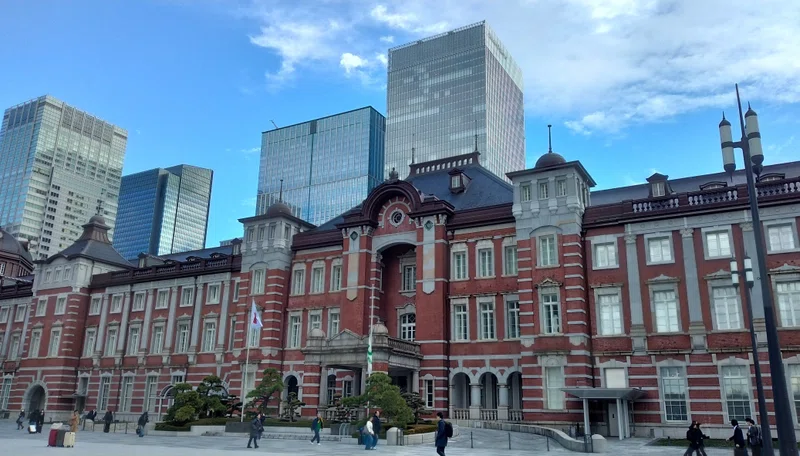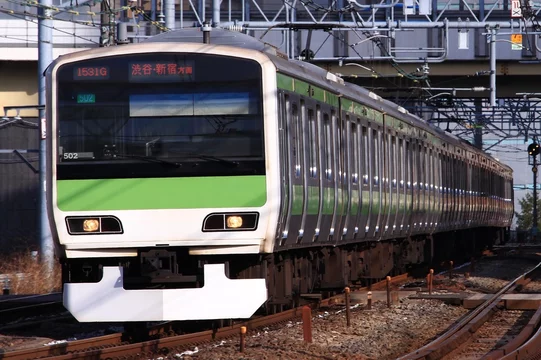Introduction.
The Yamanote Line, introduced here, is a loop line that circles Tokyo and is one of the most famous railroad lines in Japan.
The line is approximately 34.5 kilometers in length, circling the center of Tokyo and passing through the inner 23 wards of the city.
The Yamanote Line is very important to tourists and commuters because it connects Tokyo’s iconic landmarks, major tourist destinations, and business districts.
The Yamanote Line is dotted with some of Tokyo’s most iconic landmarks and downtown areas, including Tokyo Tower, Tokyo Station, Shinjuku Station, Shibuya Station, and Ikebukuro Station.
There are also many shopping centers, restaurants, and cafes near each station, where visitors can enjoy sightseeing, shopping, and dining.
The Yamanote Line runs very frequently, with trains running approximately every 3 to 5 minutes during the daytime.
Even late at night, trains run every 20 to 30 minutes, making it a convenient means of transportation.
In order to experience a different way of enjoying the Yamanote Line by “running” it, we will start by understanding its history.
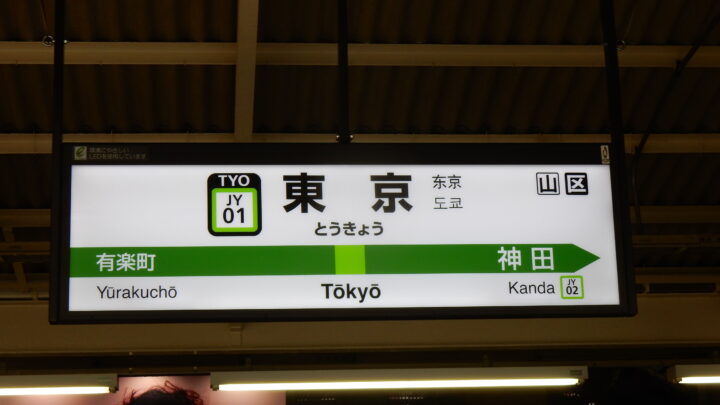
History of the Yamanote Line
The Yamanote Line was opened in 1885.
The line initially started as a route connecting Tokyo Station to Shinjuku, Ikebukuro, Ueno, Shinagawa, Tamachi, and Yurakucho stations.
During this period, the Yamanote Line served primarily as a freight transport line.
In 1909, the Yamanote Line was electrified.
Electrification made train operations more efficient, faster, and more stable.
In the early 20th century, the Yamanote Line was further improved and extended.
This allowed more areas to be incorporated into the line network and accommodated the expansion of the city center.
During the postwar reconstruction period after World War II, the Yamanote Line was also rebuilt.
With the reconstruction of the city, transportation demand increased and the Yamanote Line played an increasingly important role.
After the war, the Yamanote Line continued to expand its transportation capacity.
Efforts were made to increase the number of trains and improve service for the convenience of users.
Today, the Yamanote Line is used by many people as a major transportation line connecting the center of Tokyo.
It is used by a wide variety of users, including tourists, commuters, and students.
In addition, technological advances continue to improve the vehicles and services.
*The order in which stations opened, station name, and date of opening. In order of outward from the top, starting at Shinagawa
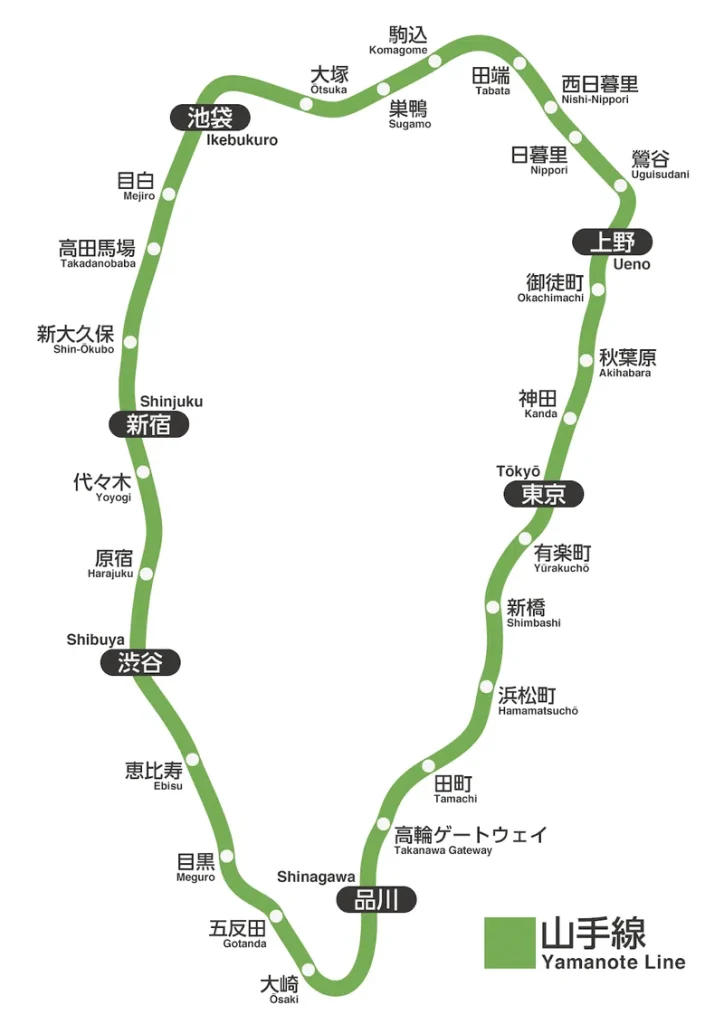
Shinagawa Station June 12, 1872(May 7, 1872)
Osaki Station February 25, 1901
Gotanda Station October 15, 1911
Meguro Station Mar. 16, 1885
Ebisu Station February 25, 1901
Shibuya Station – March 1, 1885
Harajuku Station
Yoyogi Station – September 23, 1906
Shinjuku Station Mar. 1, 1885
Shin-Okubo station November 15, 1914
Takadanobaba September 15, 1910
Mejiro Station March 16, 1885
Ikebukuro Station April 1, 1903
Otsuka Station April 1, 1903
Sugamo station April 1, 1903
Komagome Station November 15, 1910
Tabata Station April 1, 1896
Nishinippori station April 20, 1971
Nippori station December 19, 1931
Uguisudani Station July 11, 1912
Ueno Station July 28, 1883
Okachimachi Station November 1, 1925
Akihabara Station November 1, 1890
Kanda Station March 1, 1919
Tokyo Station December 20, 1914
Yurakucho, June 25, 1910
Shimbashi Station December 16, 1909 (The first Shimbashi Station (later Shiodome Station) opened on October 15, 1872)
Hamamatsucho Station December 16, 1909
Tamachi Station December 16, 1906
I ran on the Yamanote Line.
Now, let’s get down to the main topic of this article.
Are you making the most of the Yamanote Line?
Riding the train is not enough.
I believe that the true way to enjoy trains is to look at them from the outside, run along the tracks, and compete with the trains to see how fast you can run.
That is why I decided to ride around the Yamanote Line.
The distance was about 40 km around the line, and there were 29 stations.
The nice thing about the Yamanote Line is that you can start from any station!
And since you can burn at least 2,700 calories in one lap, it is a wonderful running course that will not make you fat even if you run while eating ramen at the ramen stores located at each station.
Also, a round trip on the Yamanote Line train costs 570 yen, but running is free!
Our recommendation is to start so that you pass through Shibuya and Shinjuku stations at a time when there are few people!
You won’t get any complaints if you walk around the Yamanote Line, so pace yourself at a pace that suits you and take in the scenery of the urban crowds.
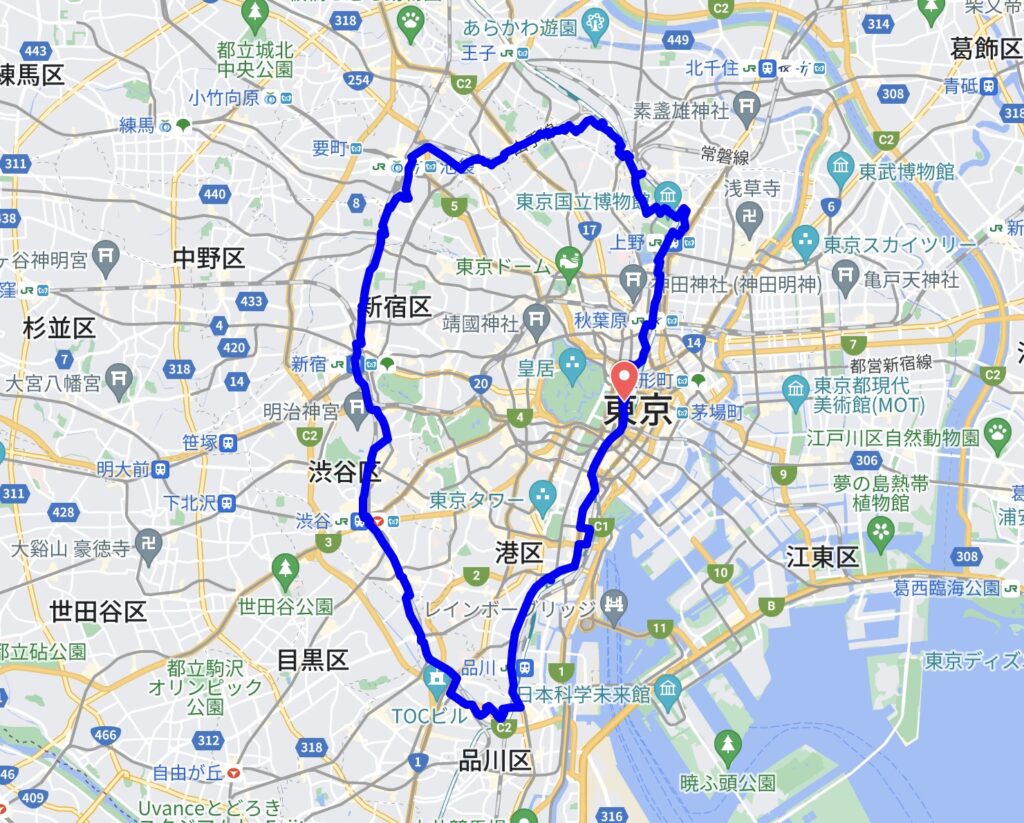
Three recommended spots
There are many sightseeing spots along the Yamanote Line, and among them, I would like to introduce three that I recommend.
The first is the Ueno Zoo.
By learning how animals walk and run beautifully at the Ueno Zoo, you will not get tired and will be able to run for a long time.
I recommend the birds.
If your legs get tired, you can fly and move around, which will tire your arms but give your legs a rest.
Some birds cannot fly, but if you can learn how emus walk, they can travel at 60 kilometers per hour.
There are other rare animals that can only be seen in the Ueno Zoo, so be sure to visit even if only to feast your eyes.
There is also a drinking district nearby, so it is recommended to take a break and rehydrate with a beer.
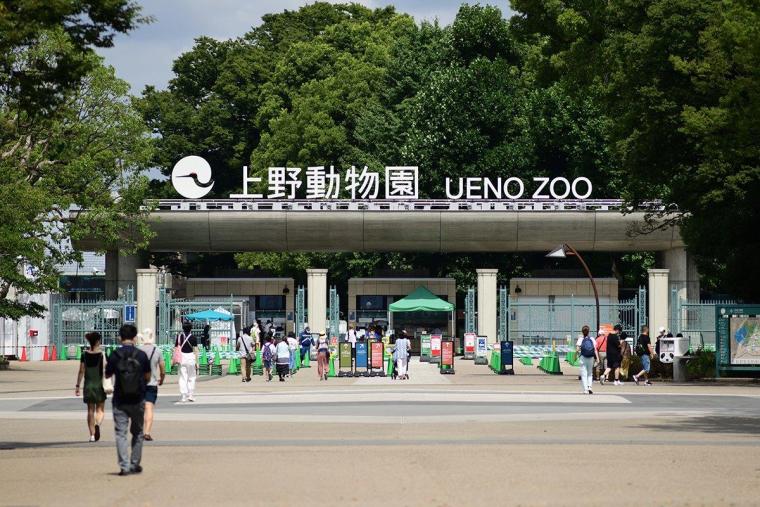
There are several bronze statues around Shibuya Station, so you can take a photo with one of them to get a two-shot.
There are not only Hachiko but also Moyai statue and NANAKO statue in Shibuya, so you will not be lonely if you take a picture with a statue by yourself! However, it is difficult to find a photographer.
Just be brave and ask someone nearby to take a series of photos for you!
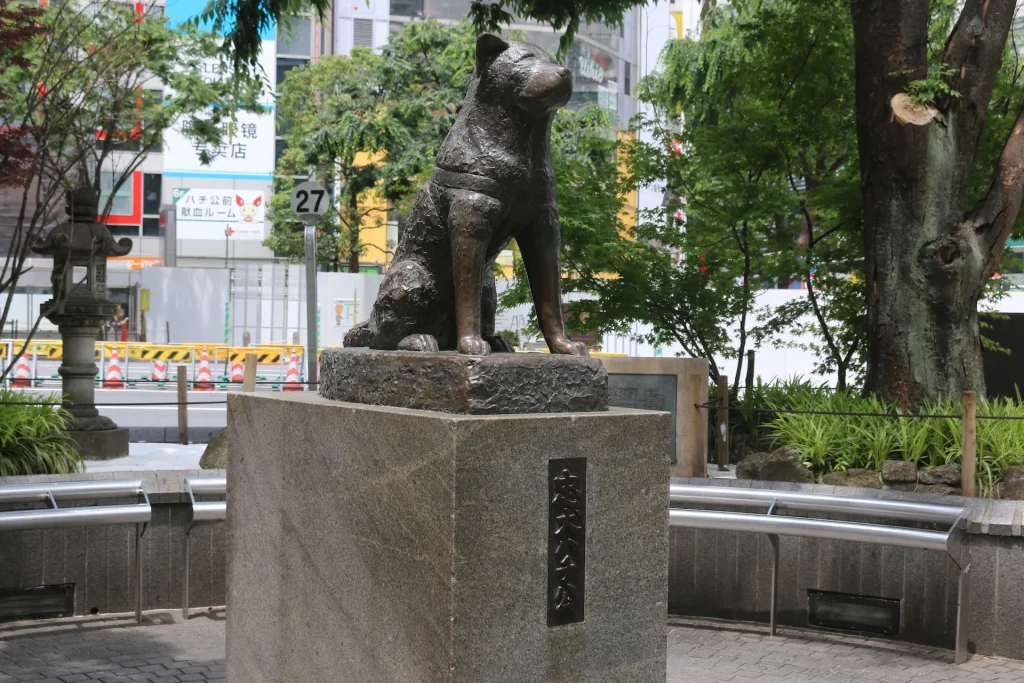
The third area is around Shimbashi and Hamamatsucho stations.
Shiodome is nearby, so if your timing is good, you may have a fateful encounter with a Nittele announcer or actress.
It is up to you whether it ends up as eye candy or a fateful encounter.
There is also an Italian-style district called Italia-gai, where you can enter a restaurant, nourish yourself with Italian cuisine, and rehydrate yourself with wine.
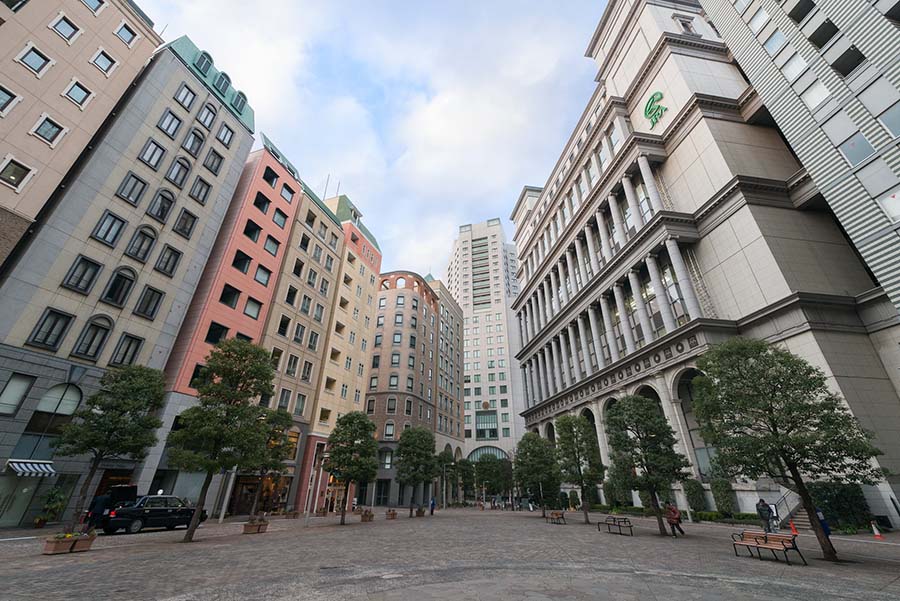
Finally.
The Yamanote Line running course is full of rest spots where you can relax, so even if you lose heart on the way, you can always retire because there are sights nearby and the train will be right there when you get to the station.
You are one rank higher than an Imperial Palace runner after you have completed the run.
You can write on your resume that you are a Yamanote Line runner. You can boast to your friends that you are a Yamanote Line runner.
They will probably say, “I’ve never heard of a Yamanote Line runner before! they will say, “I’ve never heard of a Yamanote Line runner before!
This is especially recommended for people who are not good at communication, because it will become a topic of conversation even if you quit halfway through the race or finish it.
Everyone, please give it a try.
